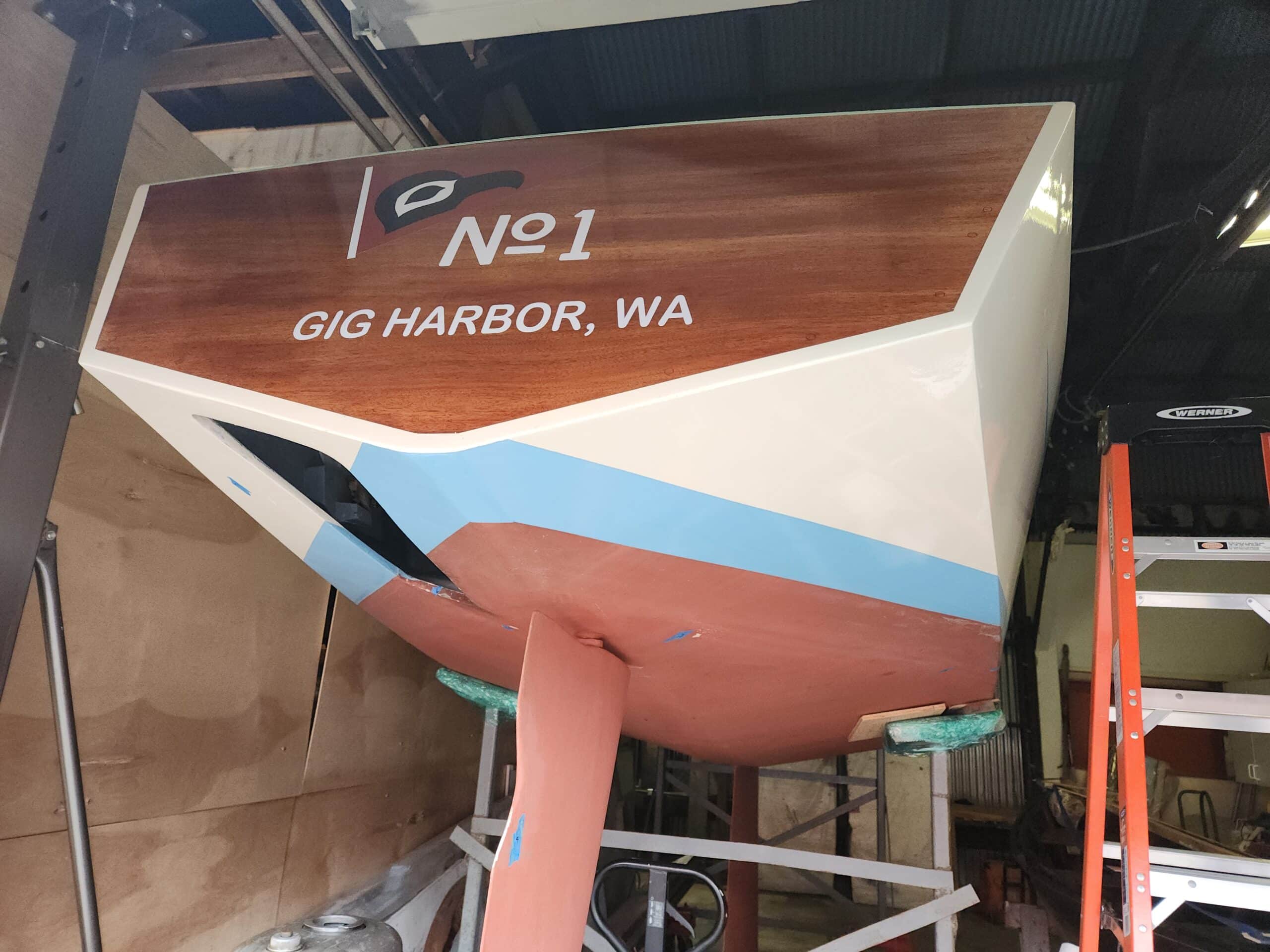How a one-off challenge from a plywood company became one of the most timeless boat designs to ever grace the seas, and where the iconic prototypes came to share their stories.
What is a Thunderbird?
Thunderbird sailboats were originally produced to meet a challenge put forth by the Douglas Fir Plywood Association: create a home-built plywood sailboat that could race and cruise, sleep four, and be powered by a small outboard motor. Today, the Thunderbird is an icon of the boating world, known for its ease of construction, speed, and stability. It’s particularly special to the maritime city of Gig Harbor, where the first three Thunderbirds were designed and built by boatbuilder Ed Hoppen and designer Ben Seaborn. Originally conceived in 1957, the Thunderbird model checked many of the boxes that amateur boatbuilders were interested in and quickly became one of the most influential designs in boatbuilding, sparking thousands of iterations that are still being made today.
Riley Hall, Preservation Specialist for the Harbor History Museum in Gig Harbor, is no stranger to the Thunderbird. His senior project in high school nearly 14 years ago was documenting the parts of the second-built “T-Bird No. 2,” named Pirouette, when it was originally restored. He was also on board for the recent relaunch of Thunderbird No. 1 and has worked to restore both boats. Right now, he’s building the space where people will be able to visit Thunderbird No. 1 at the Harbor History Museum.
Impressing an experienced sailor and shipwright like Riley with a boat is no small feat, but the Thunderbird does just that. “They’re so maneuverable that you can sail it like halfway up into a marina and tack out of there,” Riley says. “The boat just performed way better than the designer or the builder ever thought. You have ’em out in 30 knots of wind, and the thing’s doing fine, you know? You’re not thinking, like, oh my God, this thing’s gonna sink or something.”
Tack: The left or right turn a sailboat makes in order to catch the most wind and continue sailing, even into the direction of the wind.
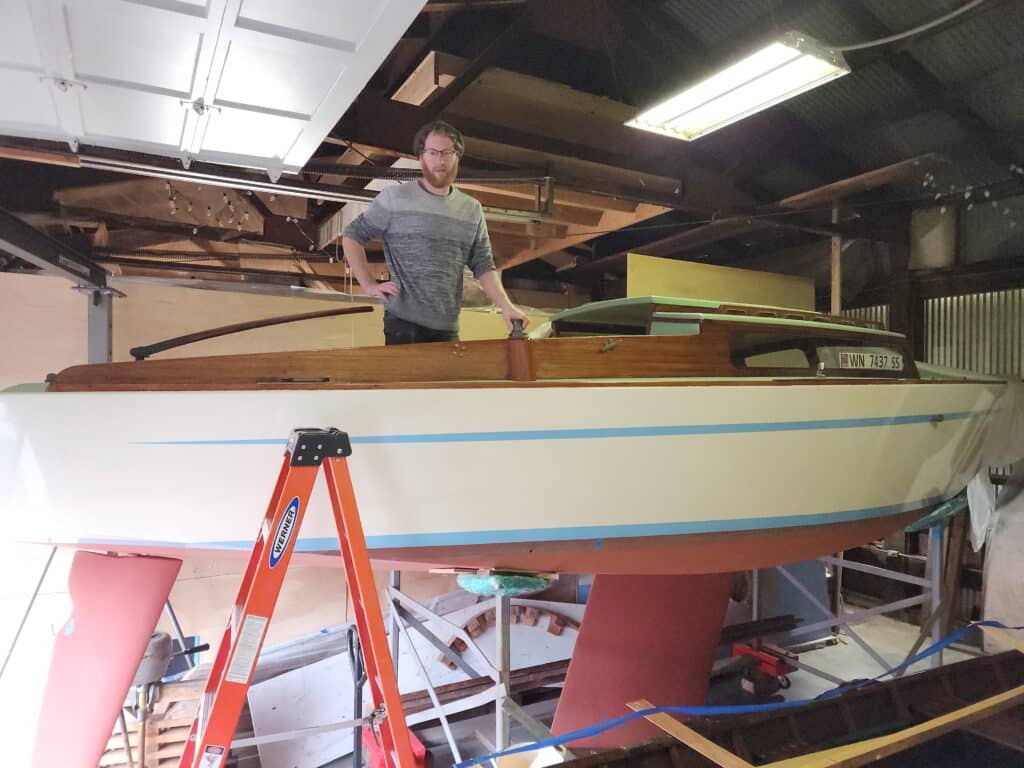
What makes the Thunderbird special?
Gig Harbor Boatshop Executive Director Guy Hoppen and Riley both draw attention to the Thunderbird’s “chine line,” the part of a boat’s hull where the bottom meets the side and often where the boat floats in water. “Usually, a naval architect probably would start with a sheer line on paper,” said Guy. The sheer line is the shape of the uppermost deck of a ship. “I have a hunch Seaborn started with a chine line. I think the key to performance was finding that sweet spot where plywood would bend.” Guy explains that plywood won’t bend into a circle or a sphere like other wood does, but it will bend into a conical shape. Imagine twisting a popsicle stick: it twists but breaks when you try to fold it.
Chine: A sharp change in the angle of a hull (main body of a boat), rather than a smoother “carvel” or “clinker” style hull. In Thunderbirds, the chine is part of what made them possible to be easily built from sheets of plywood. 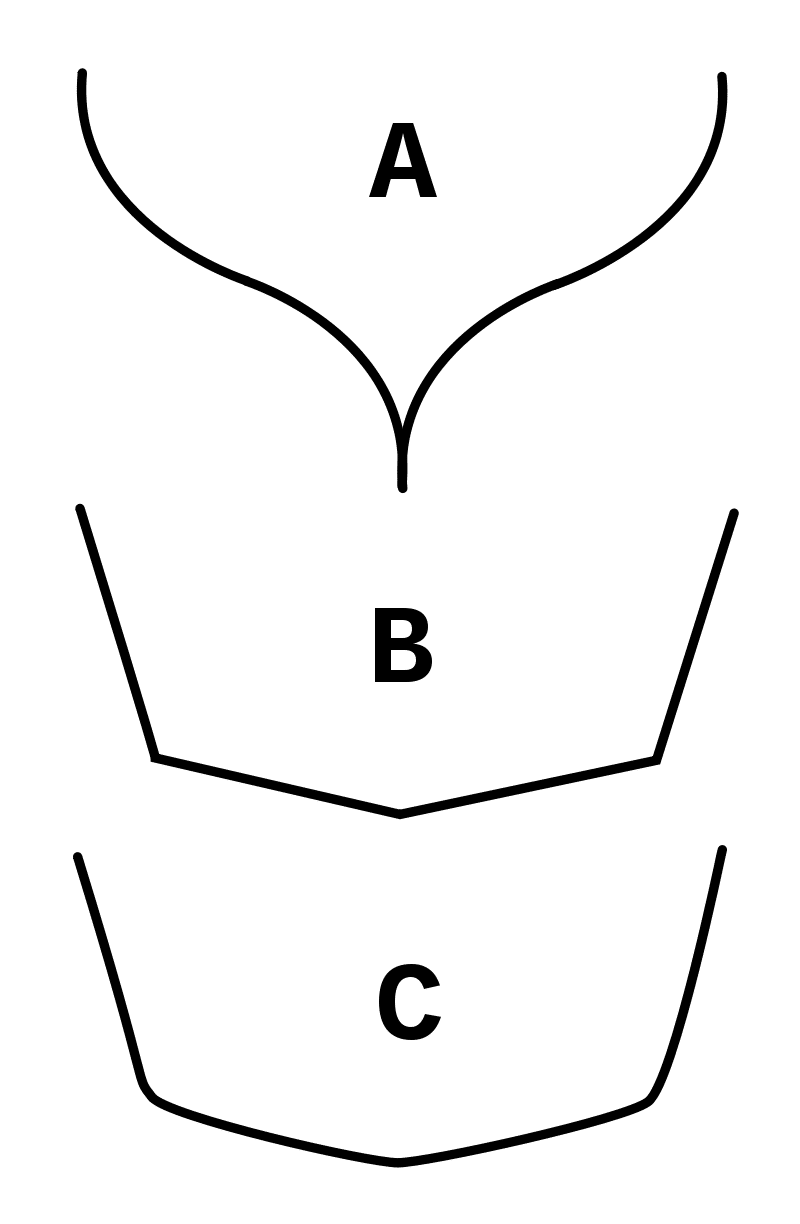
S-bottom hull (A), compared to a hard (B) and soft (C) chine hull
However, the reasoning behind certain design decisions is speculation, since the original designs were lost to fires and time. Despite that loss, Riley and Guy feel confident that the unique chine of the Thunderbird’s design is one of the most important parts of the Thunderbird’s indomitable timelessness and seaworthiness.
“Because of the chine, they did get this secondary stability,” said Riley. He explained that sharp chine designs fell out of favor after the original design of the Thunderbirds, but in recent years, designers and builders have started adding them back in for stability and speed. “It does allow the boat to heel over, and as the boat heels…that flat section is then creating more lateral resistance and pushing off and letting you accelerate forward,” Riley says.
Riley also credits the chine line with keeping the interior drier for the pilot and crew while it’s sailing. “Most sailboats sailing along, when you hit a wave, it hits [the] side of the boat, and it goes right from the shrouds into the cockpit. [In the T-birds, waves] hit the chine, and they shoot away from them.”
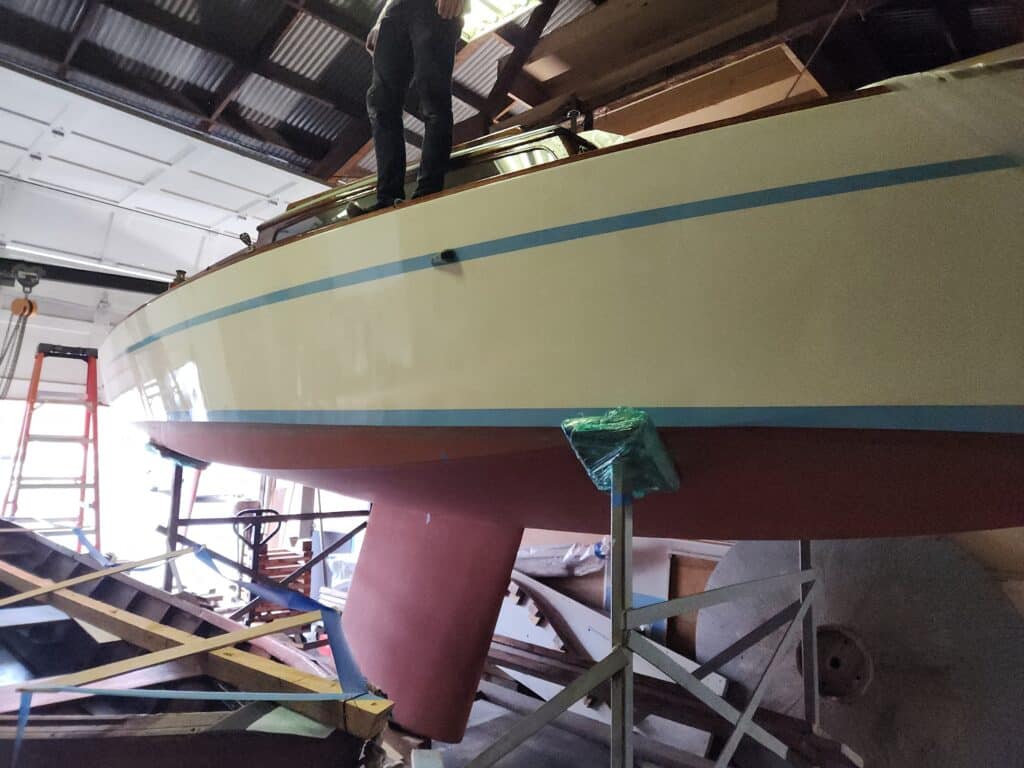
The first three Thunderbirds
Guy Hoppen is the son of Ed Hoppen, who started the “Ed-don” (Eddon) Boat Company in 1946 in partnership with Don Harder. Originally located near 6th Avenue in Tacoma, the company moved to the Glein Boat Building Company’s location on the Gig Harbor waterfront in 1950. The boatshop structures, including the house that Guy grew up in, were constructed just five years prior to the Eddon Boat Company’s arrival.
This site became the birthplace of the first three Thunderbirds. According to Guy, Thunderbird No. 1 was the model that served as proof of concept for Ed and Ben. Originally launched in 1958, Ed and Ben were surprised by the boat’s performance. Pirouette (also known as T-Bird No. 2) iterated on that design, lightening the overall construction and improving some other aspects, but kept to the core tenets set by the original challenge from the Douglas Fir Plywood Association. Pirouette and the third Thunderbird Windsong became the model from which the Eddon Boat Company produced boatbuilding plans that they sold for $2.
Despite three fires and the dissolution of the Ed-Don partnership, the boat yard ran under Ed Hoppen until 1977, when it was sold to a series of investors. In 2003, the current owners proposed to demolish the structures and replace them with homes and a marina. This motivated Guy Hoppen and the Gig Harbor community to take action, and in early 2005, the citizens of Gig Harbor voted to preserve the historic structure, as well as its traditional use as a boatshop.
Since then, the building has been restored, a marine railway has been placed to increase access to the water, access for the community has been improved, and the brick house has been reopened with the City of Gig Harbor. Today, the Gig Harbor Boatshop operates as a nonprofit that educates the community about boatbuilding, traditional fishing practices, and more.
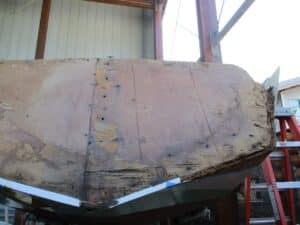
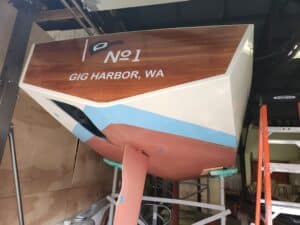
Thunderbird’s Modern Heritage
Riley thinks that the ease of building is part of why the Thunderbird has become such a long-held design. “They’re these family heirlooms that people crafted themselves and really fell in love with. They perform really well; they’re very simple,” he says. Riley described the appeal of a plywood boat in that it’s easier to make waterproof and seaworthy in comparison to other styles like lapstrake and riveted boats.
Even though it’s sort of boxy, and “it’s not sexy,” according to Riley, it’s recognizable. Riley recalled that at a recent boat show, “even people that kind of knew about them or didn’t ever see a Thunderbird were thinking about them in a new way.”
Part of what made Thunderbird No. 1 easy to sail was its adaptability. “Very few boats are great in five knots of wind that are also great in 25 knots of wind,” Riley explains. “Whereas this thing…still feels solid, so they were able to dial that in. The other thing I love about this boat is that it sails just fine with only the main [sail] up… You can go ghost around the harbor with just the main sail, like you’re on a laser.”
Laser: A small, one- or two-crew boat typically used near Gig Harbor for training the basics of sailing as well as one of the most common racing classes.
The first two Thunderbirds do have some differences. The sharp chine of Thunderbirds mean they are less likely to leak than a hull built from many pieces of wood, but in the original design it was “overbuilt,” with extra timber to reinforce the hull. This changed with the second iteration to be lighter and easier to build. Pirouette also has a “spade rudder,” while Thunderbird No. 1 has a skinnier rudder. According to Riley, Pirouette can be skulled right into dock, but it’s a little trickier with the prototype.
Since the relaunch of Thunderbird No. 1 in August 2023, Riley, Guy, and volunteers from the boatshop have shown her alongside Pirouette at the Wooden Boat Festival in Port Townsend, where they really gave the restored vessel a re-christening by spending the night on board. Now, Thunderbird No. 1 waits on boat stands to be displayed at the Harbor History Museum. Meanwhile, Pirouette waits for warmer weather back home at the Gig Harbor Boatyard, eager to teach another generation of boatbuilders, visitors, and community members about Gig Harbor’s maritime heritage.

If you liked this story, consider visiting our This Is Maritime Washington series for more stories about how Washington’s maritime culture.



